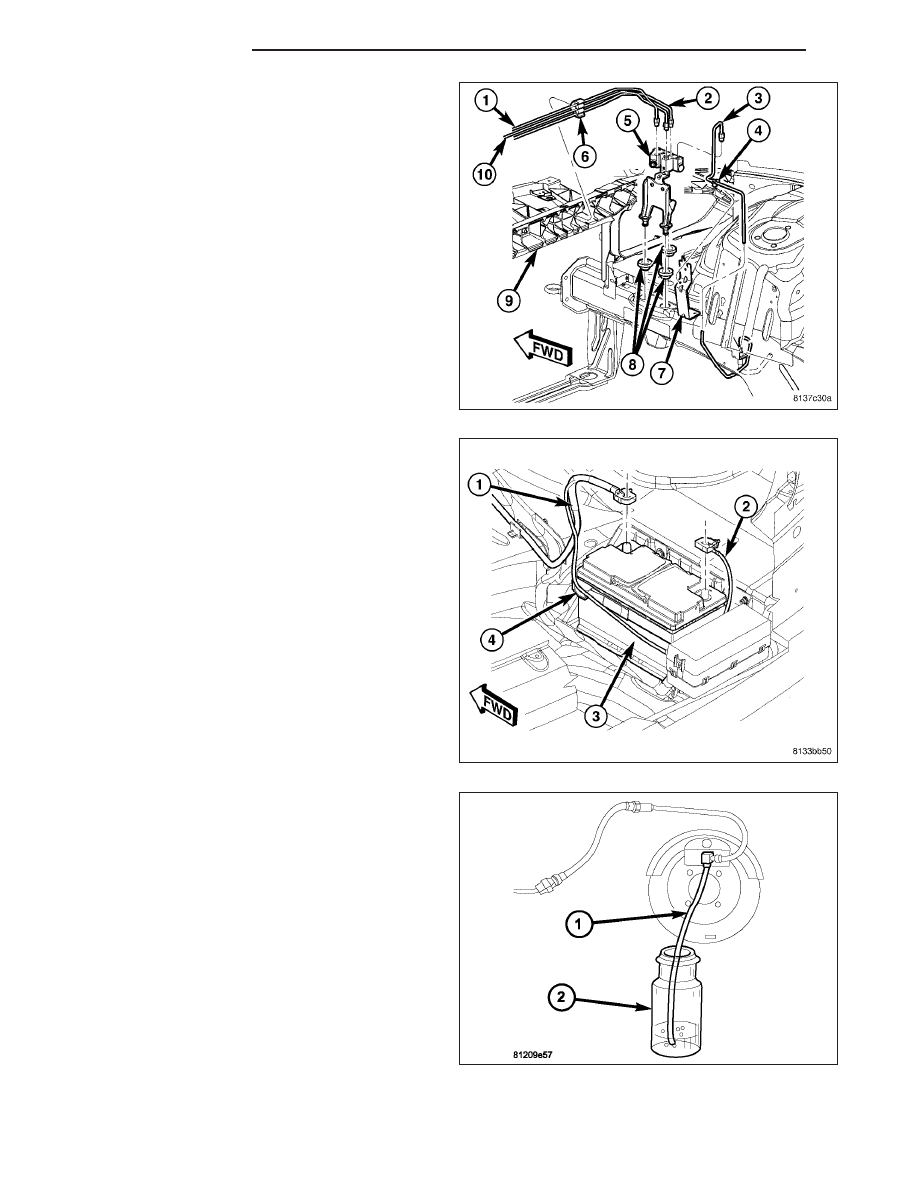Chrysler 300/300 Touring/300C, Dodge Magnum. Manual - part 160

3. Install brake tubes (1, 2, 3 and 10) at junction block
(5). Tighten tube nuts to 20 N·m (177 in. lbs.)
torque.
4. Remove brake pedal holding tool.
5. Connect battery negative cable (2) to battery post.
It is important that this is performed properly. (Refer
to 8 - ELECTRICAL/BATTERY SYSTEM - STAN-
DARD PROCEDURE)
6. Fill and bleed (1) base brake hydraulic system.
(Refer to 5 - BRAKES - STANDARD PROCE-
DURE)
7. Road test vehicle to verify proper operation of
brakes.
5 - 82
BRAKES - BASE
LX